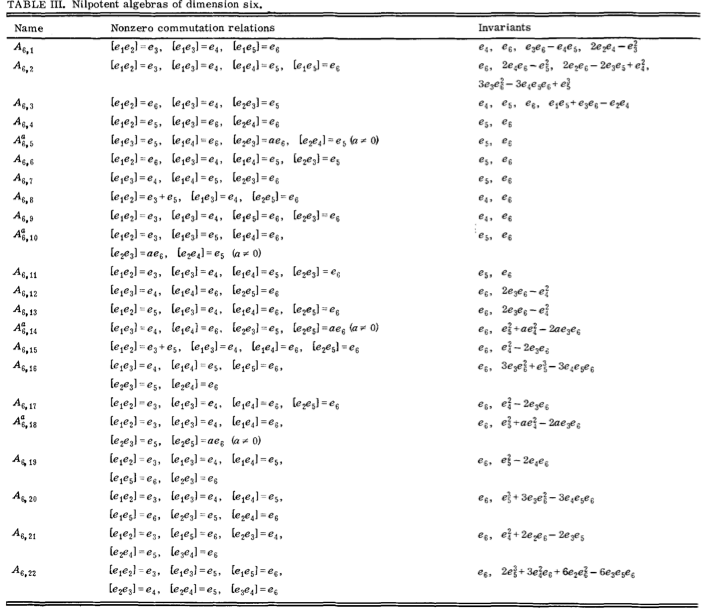I would aim to know the complete classification of 6 dimensional non-semi simple Lie algebra (here the dimension stands for the generators; or the dimension $\leq 6$).
In this paper, in page 7, it stated that: "There is no complete classification of the six-dimensional real Lie algebras. However, all nilpotent six-dimensional Lie algebras are known." I also found this paper: J.Math.Phys. 17 (1976) 986, which lists nilpotent six-dimensional Lie algebras in Table III, p.991.
My question, again, is that: whether complete classification of 6 dimensional non-semi simple Lie algebra is known; for both real/complex non-semi simple Lie algebra of dimension 6? What is the most complete result? (In which paper/ref can I find a table of their Lie algebra?) Is that Table III a complete or incomplete for all real/complex non-semi simple Lie algebra of dimension 6?
Deep appreciation to whom concern and reply. (My question is motivated by a problem in topological field theory.)

